For your own information, let's get acquainted with the types of railway wagons in Uzbekistan.
Closed wagon
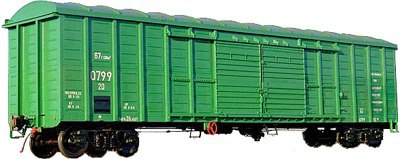
The most common freight cars are closed cars, which are designed to protect the goods from rain, dust and dirt or other external factors. These wagons can be made of wood or all metal. Depending on the number of doors, it can be one-door or two-door. Closed wagons are used to transport a variety of goods, such as foodstuffs, industrial goods, equipment, grain, machinery and animals. Here you can imagine what is loaded into closed wagons. Such wagons include refrigerated wagons equipped with refrigerating chambers. In addition, there are closed thermos wagons for products, which are designed for goods with a limited shelf life.
Platform
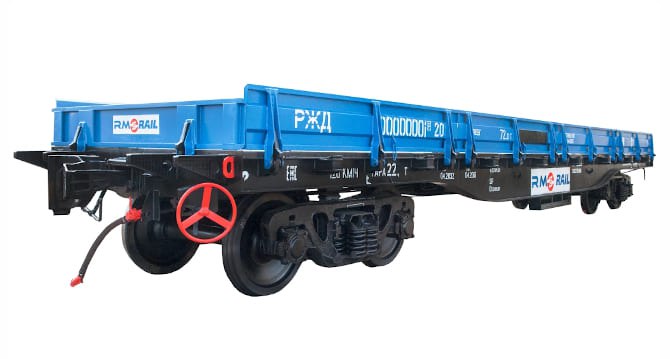
Flat cars as a type of freight car are widely used. Of all the variety of freight cars, flat cars have the largest number of modifications. Flat cars are used to transport containers, cars, as well as long and bulky items (timber, rolled steel, construction materials). For transporting large 20- and 40-foot containers, the sides, platforms, and racks for securing containers are removed. To transport passenger cars, flat cars are equipped with bodies with platforms, supports, and special inclined racks. To transport timber, special racks and end walls are installed on the platform to prevent logs from shifting during transport.
Cistern
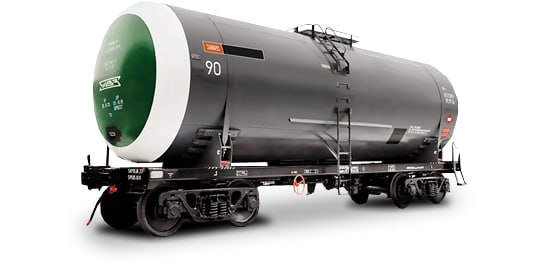
Tank cars are usually cylindrical in shape. For easy loading, there is a cap with a lid on top, and for unloading, a discharge device is provided. The material of the tanks varies depending on the liquids or powdery substances they carry. It’s one thing when they transport petroleum products: these are general-purpose tanks. And another thing entirely when special tanks are required, resistant to liquid effects, including chemically active and food liquids. Tank cars also carry liquefied gas. Special tank cars are equipped with product control devices and may be insulated or fitted with heating elements when necessary.
Semi-open wagon
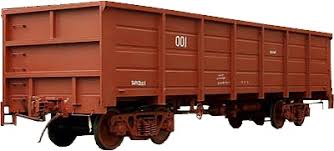
Open-top cars are used to transport bulk or unit cargo that is not sensitive to weather or other external factors. Since open-top cars have no roof, mechanical loading is possible. Unit cargo is unloaded through hatches in the bottom, and bulk cargo is unloaded through the end walls of the car. The purpose of open-top cars is to transport ore, rocks, timber, and pipes. They are also often used to transport metallurgical products: rolled steel, steel coils, rebar, and scrap metal. The latest innovation from railcar factories is universal four-axle open-top cars with a load capacity of up to 75.5 tons.
Hopper
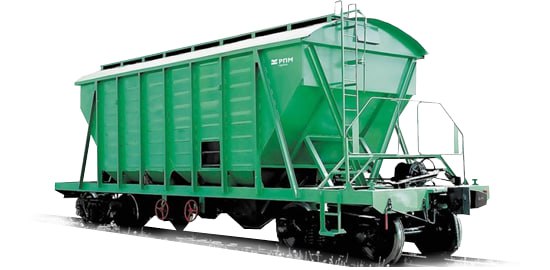
A hopper car is a bunker car equipped with a self-dumping system. Hoppers come in open and closed types, with the latter protecting the cargo from rain and other external factors. A feature of the design is the presence of a loading hatch on the roof. In conversational English, 'hopper' literally means 'hatch.' Essentially, this is an open-top car shaped like a funnel with hatches. Special tank cars are equipped with product control devices and may be insulated or fitted with heating elements when necessary.
Transporters
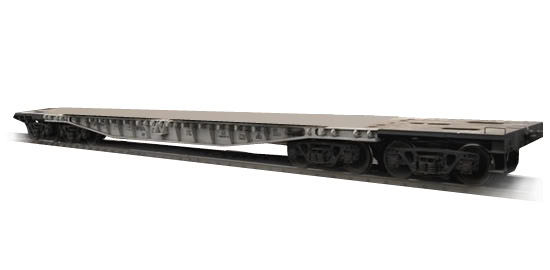
Purpose: Transportation of oversized cargo. Conveyor type and features Square: They have a main supporting beam, in the lower part of which there is a loading platform. Load capacity - from 66 to 220 tons, depending on the length of the loading platform, the number of axles and the height of the loading platform from the rails. There are 4, 8 and 16 axles with a load capacity of 66, 100, 110, 120, 200 and 220 tons. Platform: There are 4, 6 and 8 axles with a load capacity of 64, 92, 110 and 120 tons. Well, or well-shaped: Designed for round and / or square cargo. In the lower part of the niche, the so-called "well", there are beams for securing cargo. There are 4, 6, 8 axles with a load capacity of 53, 61, 80 and 110 tons. Coupling: The sections of the conveyor are connected by automatic couplings without absorbing devices. There are 12, 16 and 32 axles with a load capacity of 120, 240 and 480 tons, respectively. Articulated: The load is located between two sections, consoles, on beams connected with springs. Equipped with a hydraulic lift system. There are 16, 20 and 28 axles with a load capacity of 220, 300, 400-500 tons, respectively.
Dumpcar
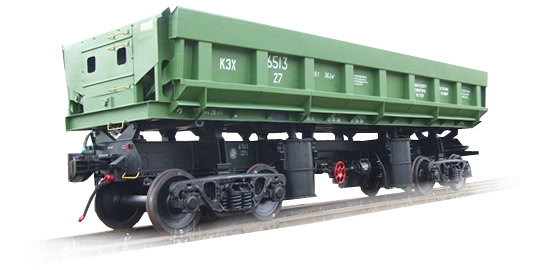
Purpose: Designed for transporting bulk cargo Features: Unlike other wagons, it has a body that tilts during unloading, and sides that fold down when the body tilts. They come with 4, 6, 8 axles with a load capacity of 60-65, 100-105 and 145 tons, respectively. According to the unloading method, dump cars are distinguished with pneumatic unloading and with hydraulic unloading.
Car carrier wagon
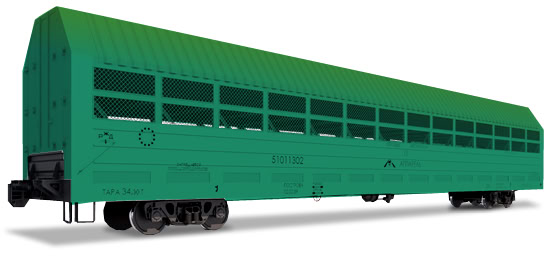
Purpose: Designed for transporting cars, minibuses, car trailers and other wheeled vehicles. Features: There are covered ones, which protect the cargo from external influences, and open ones, which do not protect the cargo from external influences.
